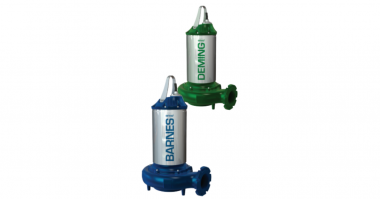In this webinar series, we’re partnering with the Women of SWPA to talk about the wastewater industry, today’s challenges and opportunities within the industry, and what the future holds for it. In this session, Charli sits down with Layla Wilhelm to chat about the systems approach to Lift Stations design and construction.
Layla Wilhelm is a Product Manager at Crane Pumps & Systems, in Piqua, OH. Originally from Galway, NY, she earned her BS in Chemical Engineering from Rochester Institute of Technology. During her undergraduate, she participated in multiple co-op rotations – two at a tungsten powder processing facility in their research and development lab, and one at a polymer start up in their research lab. Layla started at Crane Pumps & Systems after graduating as an Application Engineer, being promoted to Product Manager after a few years. She is currently pursuing her MBA from the University of Cincinnati. When she’s not working or going to school, Layla enjoys spending time outside with her husband and two dogs.
What is the “systems approach” and how can it benefit the design engineer, manufacturer, sales representative, contractor and end user? The key issue lies in how lift stations are typically constructed, that is by the lowest bidder, working from standard or cookie cutter documents. Many times, drawings are not to scale and the contractor or builder must be an expert in assembling the numerous parts and pieces that make up even the simplest duplex submersible pumping station. In that case, the contractor must turn to the (low-bid) supplier of the pumping equipment and attempt to get as much system responsibility as possible included in a purchase order or purchase contract.
The constructor of a facility designed using the “systems approach” as the basic philosophy will avoid many of the pitfalls inherent in the often-convoluted “low-bid” approach, but how far should the designer take this approach in creating lift or pumping station construction projects? The answer depends on a number of factors, such as the complexity of the system(s), the sophistication level of the contractors who are likely to bid the project, and the capability of the local manufacturer’s representatives.
The most complex systems may include several pumping stations on a common manifold. For such systems, hydraulic analysis software is necessary to select the pumping equipment. In addition, because of the potential for improper operation, bidding restrictions to a few pre-selected manufacturers are justified. At a minimum, the scope of supply should include pumps and guide-rails, access frames and covers =(hatches), motor controls, and pump station control systems. The scope can be expanded to include access hatches over a valve vault (if included in the design), variable frequency drives, pre-cast concrete wet well and valve vault, and all accessories, such as discharge gauges, check valves, plug valves, piping, etc. In the end, the goal is a quality project with no insurmountable issues during construction and successful operation with minimal call-backs after completion. The proper application of a systems approach can help all involved parties to reach this goal.
Check out the Part 1 of our Women of SWPA series.




Comments